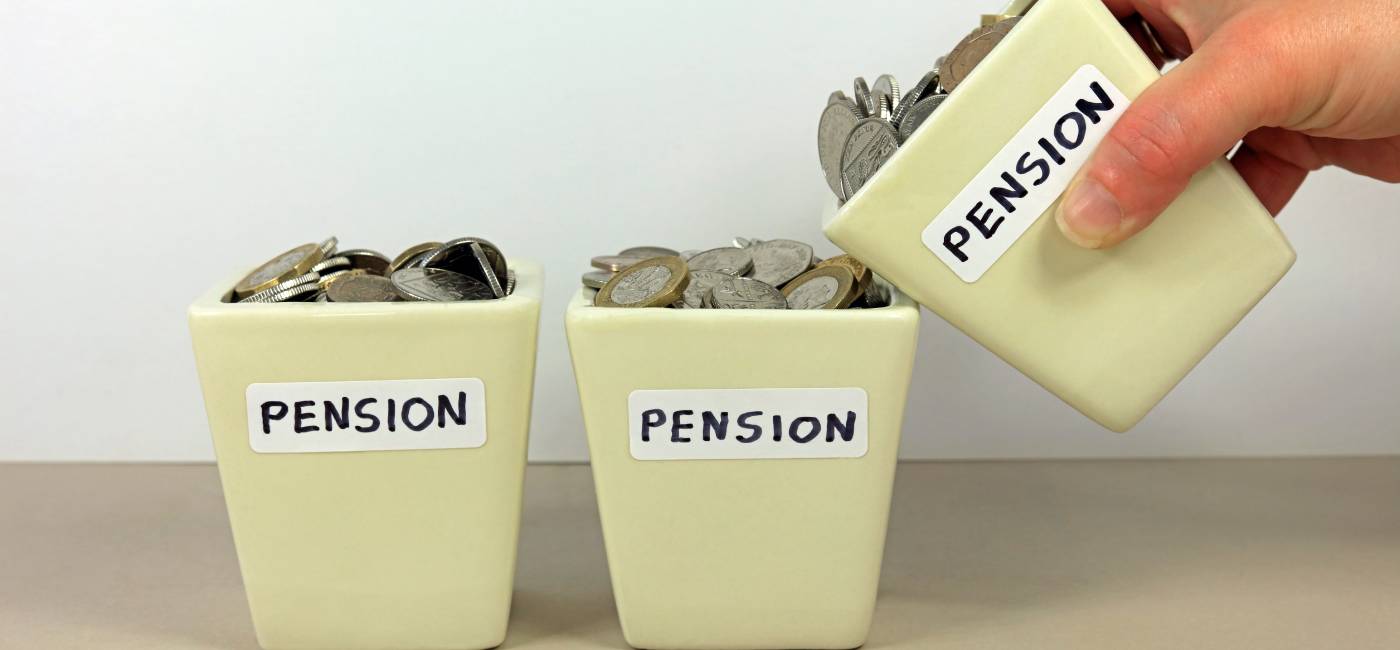

This article is for general guidance only and is not financial or professional advice. Any links are for your own information, and do not constitute any form of recommendation by Saga. You should not solely rely on this information to make any decisions, and consider seeking independent professional advice. All figures and information in this article are correct at the time of publishing, but laws, entitlements, tax treatments and allowances may change in the future.
Planning for a comfortable retirement often sparks a debate: should you entrust your future to a traditional pension, or could you get more financial security from the bricks and mortar of buy-to-let property as pension?
As pension rules evolve and the property market faces new challenges, making the right choice has never been more critical.
What’s on this page?
The buy-to-let market in the UK really began with the introduction of buy-to-let mortgages in 1996, and expanded rapidly in the 2000s. Now there are 2.82 million buy-to-let landlords in the UK. Nearly two-thirds of UK landlords are over 55, government data shows.
The average landlord is 59 and more than three-quarters of those with five or more properties are aged 55 or older. But is that because it’s a good retirement choice or simply because fewer younger landlords are entering the market?
Richard Dana, chief executive of specialist mortgage broker Tembo, which partners with Saga Money to provide a mortgage advice service, says he sees a large number of clients use buy-to-let to top up their retirement income because it can be a valuable source of extra cash. “But rising mortgage rates and tighter tax rules have made it less profitable for landlords in recent years,” he warns.
Property appeals to some people as a pension alternative for several reasons, including that it’s a tangible asset. Allison Jenkins, founder of Property with Soul, a property mentoring business, says property offers a double benefit in that it pays you monthly and typically grows in value over time. It gives you control, flexibility, and the option to be hands-on or hands-off depending on your lifestyle.
“I also think it gives you the opportunity to utilise your skills, whether it’s styling interiors, hosting guests, or a DIY project to keep someone busy, property can reflect your personality while generating solid returns,” she adds.
Property can certainly keep you busy in retirement, which may or not be what you’re looking for. In general it’s likely to involve significantly more work than paying into a pension.
Buy-to-let property has been falling out of favour in the UK as costs have risen. According to data from Hamptons, landlords bought just 10% of homes on the market in the first quarter of 2025, the lowest proportion since 2007.
This is down from 11% in 2024 and a peak of 16% in 2015. An increase in interest rates, regulatory costs and taxes on additional properties have made property less appealing. Because most buy-to-let mortgages are interest-only, interest rate rises have a larger impact on the size of the payments – although interest rates are now starting to come down. And pensions have a more favourable tax treatment than property, as we explain below.
Comparing the return on pension vs property is tricky. Property performance depends on location, rental income and mortgage debt. Pension performance and income varies based on your investment choices (in this case assuming a defined contribution pension, rather than a defined benefit pension).
Justin Modray, owner of Candid Financial Advice, says that on the surface a typical buy-to-let investor may have done better than a general investment fund within a pension over the last 30 years, thanks to a combination of soaring property prices and rising rental income. “But that ignores tax and the potential costs of maintaining a property,” he adds.
Wealth management firm Netwealth compared the long-term returns of a £50,000 pension pot and a £50,000 property investment over 20 years, assuming standard tax treatment, maintenance costs and no borrowing. Its analysis found the pension generated 77% higher returns, largely due to tax relief on contributions, lower ongoing costs and compounding investment growth.
It’s possible you might get better returns on property if you use mortgages to buy multiple properties, as that gives the potential for higher rental gains as well as more capital growth. This approach is known as leverage and can significantly boost property returns – but also increases the risk and complexity. Rob Dix, founder of The Property Hub, says: “When you use leverage in this way, the combination of rental income and capital growth from property has historically outperformed.”
But that means taking on debt in retirement and being prepared to work at managing a portfolio of properties in later life to use it as a pension. It could also leave you worse off if prices fall. “If you’re willing to commit to taking property seriously and ideally can diversify by buying more than one, it can provide steady long-term growth as well as a rental income stream that tends to rise in line with inflation,” says Dix.

The big drawback with property as a pension alternative is the tax bill. Pensions have the upper hand when it comes to tax, says Modray. Contributions benefit from tax relief, there is no tax on growth within your pension, and 25% of the pot can usually be withdrawn tax-free after age 55 (soon rising to 57).
Plus, if you’re employed, you might benefit from employer contributions to boost the pot further. Some company pension schemes make higher employer contributions if you put more into your pension.
In contrast, you pay stamp duty (or its equivalent in Wales and Scotland) when you buy a property – and this will be at the higher rate if you already own a property. Your rental income is subject to tax and when you eventually sell, you’ll pay capital gains tax on the profits.
Mortgage payments can no longer be fully offset against income tax. Instead, you can get a 20% tax credit for mortgage interest payments. This change has led more people – especially higher and additional rate taxpayers – to set up a limited company to hold their buy-to-let properties.
But this route comes with additional costs, complexity, and isn’t usually worthwhile unless you own multiple properties.
| Buy-to-let property | Defined contribution pension | |
|---|---|---|
|
Initial investment |
No income tax relief Stamp duty (England and Northern Ireland) or Land Transaction Tax (Wales) or Land and Buildings Transaction Tax (Scotland) |
Income tax relief on contributions |
|
Annual contribution limit |
None |
£60,000 |
|
Tax on growth |
Rental income taxed at income tax rates. You’ll get a tax credit of 20% on mortgage interest payments (even if you are a higher rate taxpayer) |
No income tax during accumulation in the pension |
|
Growth in investment |
Subject to capital gains tax (CGT) on sale at 18% or 24% |
No CGT within the pension fund |
|
Tax on withdrawals |
Income tax or CGT |
First 25% tax-free. Remainder subject to income tax. |
|
Inheritance tax |
Part of estate for IHT (potential for 40% IHT) |
Free of IHT (this is changing from April 2027) |
|
Ongoing charges
|
Maintenance, letting agency fees |
Fund charges or other management costs |
|
Exit strategy
|
Sale of the property |
Regular drawdown, buying an annuity, instant ad-hoc lump sums |
Helen Morrissey, head of retirement analysis at Hargreaves Lansdown, adds that when you go down the property route, you also need to think about the costs of buying and selling. These can really mount up.
“You also need to think about diversification. If your buy-to-let properties are all in the same area, then market movements will affect all of them. Investments in a pension default fund will be diversified in terms of asset classes and geographies to protect against downturns,” she says.
If you have, or plan to have, a property portfolio, you may be able to add some diversification by spreading your investment across different geographical areas and/or types of properties – such as flats and houses, student lets and family homes. But they’re ultimately still the same type of asset and are likely to be affected by similar movements in the market.
You can't put a buy-to-let property into a pension. Putting a residential buy-to-let property into a pension would be classed as an unauthorised payment and taxed at up to 55%. While you can’t do that, you can invest in property indirectly with a real estate investment trust (REIT) or hold commercial property within a self-invested pension plan (SIPP).
Once you retire, you need a regular income. Both property and pensions can give you this but there are some crucial differences. Pensions typically offer greater flexibility and reliability than property when it comes to income. Pension drawdown allows you to adjust how much income you take each year, and the first 25% taken from your pot is usually tax-free.
After that you’ll pay income tax on your pension withdrawals. Pensions also typically offer greater liquidity. In other words, accessing your funds or adjusting withdrawal amounts is usually far quicker and simpler than selling a property to release capital.
Buy-to-let property can provide regular rental income, which is subject to income tax. But it is less predictable. You could see your income dip due to empty periods, maintenance costs and problems collecting payments from your tenants.
Property can be a rewarding investment, but using it as a pension alternative involves higher taxes, ongoing management and less income certainty. Pensions, on the other hand, come with tax relief, the potential for employer contributions and greater diversification.
“Property has been a wonderful investment for many, and may well continue to be so, but high taxes could hinder returns and it’s vital to go in with your eyes wide open,” says Modray. “For most of us a pension is the more straightforward way to save for retirement.”


Provided by Tembo
Find out all you want to know about mortgages with expert advice.

.jpg?la=en&h=354&w=616&hash=1254A3F816E81965A47EA68E3AEC9F7A)





Learn how to combine pensions and whether it's worth it.